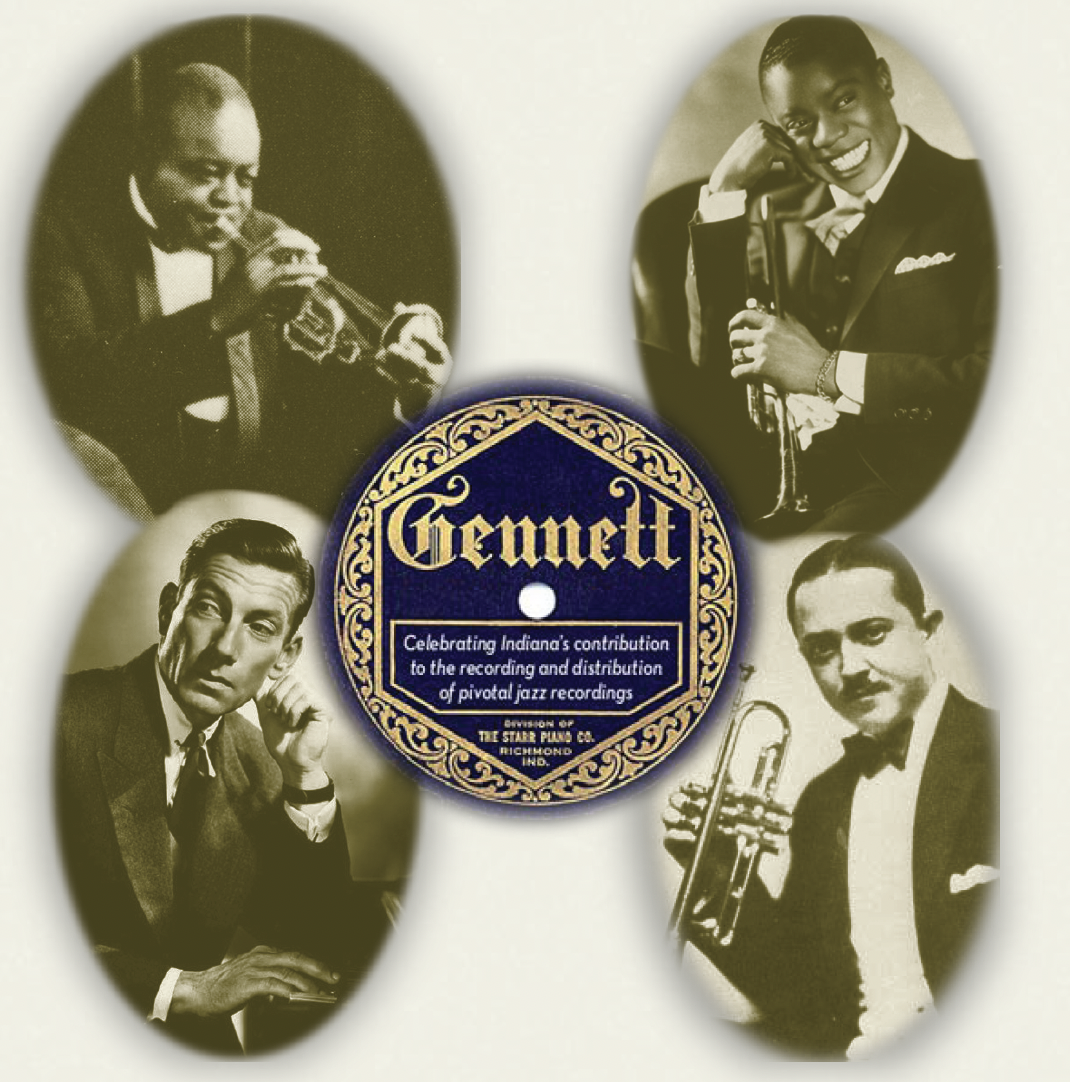
Buselli-Wallarab Jazz Orchestra
The Gennett Suite
Patois Records
A lot of things were new in the 1920s. Jazz was a new sound sweeping over the land from New Orleans to big cities and small towns. Recorded music was still a new thing. Even though the recording industry was in pupal form, the New York-based labels like RCA were the trendsetters. The mavericks making new and exciting sounds had to look elsewhere to get heard.
Gennett Records was born as a side hustle of the Star Piano Company of Richmond, Indiana. As the piano company diversified into selling phonographs, they also started their own label so their customers would have something to play. Like many other early record labels, Gennett recorded a little of everything: blues, polkas, hillbilly songs, and jazz. Among the jazz artists who got recorded with Gennett records were King Oliver, Jelly Roll Morton, Hoagy Carmichael, and Bix Beiderbecke.

Brent Wallarab first came to the University of Indiana to study jazz, and later returned as a faculty member. Wallarab has a special passion for early jazz and the role Indiana had in fostering the emerging art form. The Gennett Suite is a tribute to the tiny record label from Richmond and the giants of jazz who recorded there in the 1920s.
The Gennett Suite has four movements, each dedicated to an early jazz giant. The movements are based on melodies and solos from the 1920s records, reimagined and decontextualized as a thoroughly modern composition. “Movement 1: Royal Blue” pays tribute to King Oliver and his protégé, Louis Armstrong. The movement is based on the compositions “Tin Roof Blues,” “Chimes Blues,” and “Dippermouth Blues.” “Movement 2: Blues Faux Bix” is based on works performed by Bix Beiderbecke, including “Wolverine Blues” and “Davenport Blues.” “Movement 3: Hoagland” is based on the work of Hoagland “Hoagy” Carmichael and prominently features “Stardust.” The final movement, “Movement 4: Mr. Jelly Roll” features tunes by Jelly Roll Morton, including “King Porter Stomp.”
The Gennett Suite is a sweeping work covering four CDs and includes a richly detailed book on the history of jazz in Indiana and the suite itself. The liner notes are a giveaway that this is an academic jazz project. Wallarab does a good job keeping the wonky parts in print and letting his ensemble run free. I doubt there is much, if any, improvising on this record. The ensemble comes through with a bright, energetic sound plugged into the modern with an eye to their ancestors.
At first, the scale of The Gennett Suite’s ambition put me off. As I let the music grow on me, I realized this was a labor of love for everyone involved, and it shows.












